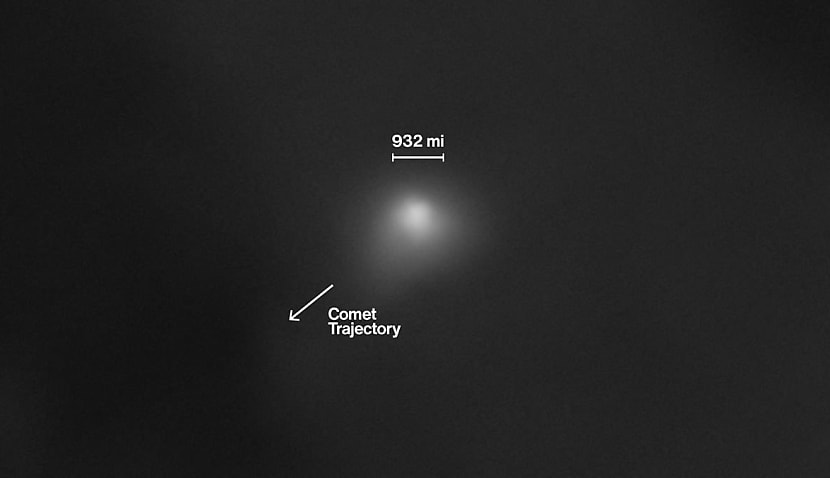In early October, the Mars Reconnaissance Orbiter (MRO), MAVEN and the Perseverance rover all recorded sightings of the comet as it swept past the Red Planet. MRO secured detailed imagery, MAVEN captured ultraviolet views, and Perseverance managed a faint but valuable detection from the surface.
The data haul is expected to help researchers refine estimates of the comet’s size, determine its chemical composition and measure how much water vapour it releases as sunlight heats it – insights that could shed new light on the object’s history and trajectory.
3I/ATLAS will make its closest pass to Earth on 19 December, but the Mars images may be the most detailed NASA manages to obtain. On 2 October, MRO imaged the comet from 30 million kilometres away, one of the tightest views any spacecraft or Earth-based telescope is likely to achieve.
Using its HiRISE camera, normally pointed at the Martian surface, MRO rotated to lock onto the comet, as it previously did during the 2014 flyby of comet Siding Spring. In the new images, captured at roughly 30 kilometres per pixel, 3I/ATLAS appears as a small, bright blur, with the comet’s dusty, icy coma.
“Interstellar objects are still so uncommon that every observation teaches us something new,” said Shane Byrne, HiRISE principal investigator at the University of Arizona. “We’re lucky 3I/ATLAS came this close to Mars.”
Researchers hope deeper analysis will reveal the size of the comet’s nucleus and details about the particles within its coma.
MRO project scientist Leslie Tamppari, from NASA’s Jet Propulsion Laboratory, said the opportunity was unusual but valuable: “HiRISE has been crucial for monitoring dynamic processes on Mars. This time, we get to investigate a passing interstellar object instead.”
Meanwhile, NASA’s MAVEN spacecraft captured the comet over 10 days beginning 27 September using its Imaging Ultraviolet Spectrograph (IUVS). The orbiter first photographed 3I/ATLAS across multiple wavelengths, then took high-resolution UV images that detected hydrogen streaming off the comet. These observations will help scientists identify various molecules and build a clearer picture of its composition.
“The images MAVEN captured are extraordinary,” said Shannon Curry, MAVEN principal investigator at the University of Colorado Boulder. “The detections are significant, and we’re only starting to analyse them.”
The IUVS data also includes an estimate of the comet’s deuterium-to-hydrogen ratio, a key clue to its origins. When the comet made its closest approach to Mars, the instrument mapped hydrogen, hydroxyl and other components in its coma.
“There was a real surge of excitement when we saw the data,” said Justin Deighan, MAVEN deputy principal investigator and lead scientist for the 3I/ATLAS campaign. “Every measurement helps expand our understanding of interstellar objects.”
On the Martian surface, the Perseverance rover also managed to catch the comet on 4 October, recording a faint smudge in a long-exposure image taken with its Mastcam-Z camera. Because the rover cannot track moving objects, the long exposure produced streaks from the stars with the comet only just visible.
Though the detections vary in clarity, together they mark one of NASA’s most detailed multiplatform observations of an interstellar visitor, offering scientists an unprecedented opportunity to study an object from well beyond our solar neighbourhood.

